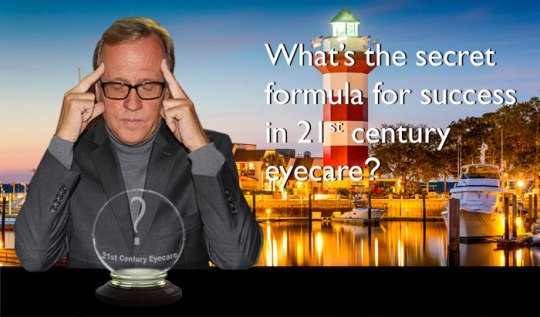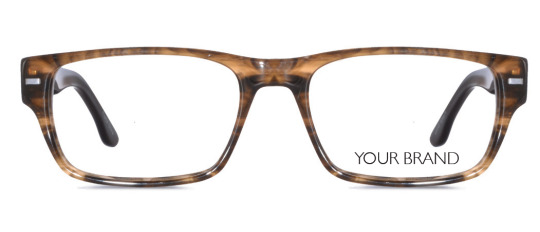#I mean. understandable? but deodorant shopping is up there with jeans shopping in terms of 'difficult and unpleasant'
Text
Hey y'all! Weird question time again, this time a question I'm hoping will save me an asthma attack or three.
The deodorant I've used for years is no longer being made, and the deodorant aisle at the store is kind of, uh, difficult for my asthma, so I'm hoping if I share the name of the deodorant I know I can use and a list of smells I know I can't, y'all might have some suggestions for replacements? Below a read more
Okay, so the deodorant I've used for years is Old Spice's Hawkridge deodorant. I don't need something that smells the exact same, I just need something that won't trigger my asthma. Luckily, I don't really have sensitive skin, so the only non-smell ingredient I need to avoid is coconut.
Smells I can't have:
- cinnamon
- mint (or any menthol)
- cedar
- smoke
- fake musk smells? the whole, like, fake leather smelling "dude" section of bath and bodyworks isn't an asthma trigger but is an insta-headache and I'd rather avoid it
- strong flower smells of any kind
- coconut
- pine
Smells I like, which would be a bonus to have:
- citrus
- vanilla/ambergris/oud honestly anything along those lines, stuff that might be described as smelling "warm" (I don't really know perfume description words, can you tell? lol)
If you have any suggestions for deodorants that don't have any of the asthma-trigger smells, I'd really appreciate it.
Or suggestions for lotions, honestly, winter's coming up and it would be nice to have something nicer smelling than Aveeno to be able to use. Thank you!!
#the person behind the yarn#it is kinda frustrating that they stopped making the one I used to use#I mean. understandable? but deodorant shopping is up there with jeans shopping in terms of 'difficult and unpleasant'#I'd say sea salt would also be a bonus but mostly as a joke#because I keep accidentally ending up with like soap and shampoo and conditioner with salt in them#I buy them because I think I won't react to the smell and that they will be effective#and then it turns out they also have salt in them#(I'm three salt issue diseases in a trench coat so it makes me laugh that the shampoo that works has sea salt in it)#(that said you do find scratches on your scalp the hard way when your shampoo and conditioner have both salt and lemon juice in them)#(like getting hand sanitizer in a paper cut lol)
20 notes
·
View notes
Text
Millennials Will Help Drive Your Future Success

By Mark Graham, Senior VP, Branding & Marketing, Visionary Mentors
“Where is the optical industry headed” asked someone in the back of the lecture hall that I gave my Guerrilla Dispensing for the 21st Century seminar. My answer: “One day, you’ll be able to buy glasses through the internet.” \

WE WERE STILL USING DIAL-UP MODEMS AT a whopping 14.4 speed so the term “on-line shopping” hadn’t taken hold yet. People still did their shopping the old fashion way, at their local brick & mortar retail establishment. Ophthalmologists didn’t dispense, opticians didn’t have optometrists and frames actually came in varying bridge and temple sizes. The 3 O’s meant something, each offering different and important services in the arena we call eye-care. And yes, some laughed at my answer.
The optical industry is an odd one; a combination of medical and retail, where patients are also customers. Get an exam — you’re the patient, and then buy designer frames — you’re a customer. Thirty years later Warby Parker and other on-line optical retailers, as well as big-box chains, continue to confound many independent practitioners. Walmart, Costco and Target make it easy to buy eggs, milk, deodorant, a pair of blue jeans and . . . prescription eyeglasses all in a single shopping trip. Oh boy!! Zenni, GlassesUSA, Warby Parker and 1800contacts let you be lazy, or more efficient, by never having to leave the comfort of your home to buy glasses or contact lenses. The optical industry is in flux and you haven’t seen anything yet.

The fact is, our industry has seen a slew of disruptive technologies and new retail entrants into what used to be a small, mom & pop industry populated by those 3 O’s. Today’s eyecare consumer has something they didn’t have a lot of just a few decades ago . . . CHOICE! More choices for where to get their glasses, and contact lenses. There’s more choices in how and where to get an eye exam now that generating an Rx is fast becoming decoupled from the standard eye exam and can be done from your own computer screen in the comfort of your home.
More choices means more frame and lens brands than ever before. Some would say, and I include myself among them, too many brands . . . so many that the term “designer frames” has become meaningless to the savvier millennial generation that will drive the success of your business in the future.
If you are still running your eyecare business as though you were living in the 1970’s, you’re going to fail. Trust me. You are going to fail! Hell, I’ll go as far as the early part of this 21st-century for that dire warning. The buzzwords for your successful future must include private-label products, social media advertising, social responsibility, industry brands and speed of service. The days of simply hanging a professional optician or OD sign outside of your establishment and then placing a small ad in the local Yellow Pages (does anyone still use those??) won’t cut it anymore. The industry has and will continue to change and you had better embrace those changes.
Let’s take this in small bites because there are many segments of the optical industry that will change even more drastically over the next decade. Lenses, managed care, private pay, on-line ordering, brick & mortar, speedy service models — they’re all morphing as we speak. Understanding and preparing for these changes will be critical for independent ECPs to stay ahead of the curve, grow their practices and avoid getting squashed by the next disruptive trend or technology.
LET’S START WITH FRAMES

This is where medicine meets fashion and the question of the day might be; Luxury/designer brands or private label? Premium, low price or something in between? The answer depends on your prime target market, baby boomers or millennials. I’d suggest a strong focus on the later because they represent over $200 billion in buying power. Don’t ignore the baby boomers, but focus on your future --- millennials! There are 75 million of them and they understand and support disruptive technologies.
There have been numerous articles written about millennial buying trends, even a few in our own industry’s trades. It might surprise you to know that Target is the favorite retailer of millennials age 25-34 and Walmart holds a close second. The Gap has been replaced by Uniqlo and Abercrombie & Fitch and Victoria Secret are becoming obsolete, Yes, I said “obsolete.”

A common thread for the popularity of these retailers seems to be more focused on value pricing and social responsibility than on carrying 5th Avenue designer brands. Add to this surprising statistic that millennial’s favorite places to shop are unhip stores like Macy’s, Forever 21, Nike and Under Armour for athletic brands, Zara for affordable runway fashion and you begin to see the importance of value pricing in the success formula for appealing to this generation. The generation born in the era of the shrinking middle class turned out to be agnostic, value-conscious consumers who are not as attached to designer brands as you might think. So, what does this have to do with eyeglass frames? Everything.
PLAN TODAY FOR A BETTER TOMORROW
Today’s single vision millennials are tomorrow’s progressive wearers and, like a McDonalds happy meal that eventually converts to a Big Mac, you’d better sharpen your pencils and learn how to attract these consumers who represent far more bodies than baby boomers.
Enter Warby Parker. I salute the founders of this hugely successful, disruptive optical retailer for understanding that today’s savvy consumer, who often shops with friends and takes selfies showing their intended purchase, is more value conscious than we might expect. This is, after all, the “me generation,” but their favorite brands are not 5th Avenue or high street, they’re Mall of America.
Furthermore, millennials are comfortable with on-line shopping and, some might suggest, actually prefer it. Warby Parker does it all; on-line and brick and mortar. Note to self: If you have the opportunity to visit a Warby Parker retail store - do so. Their merchandising and selection of frames, photo booths, music piped through their sound system and just about everything else is a study in how to appeal to the millennial generation. These are beautifully designed optical shops. Don’t dismiss me for my positive reviews of this disruptive retailer but instead, understand that consumer buying habits are changing. Brand loyalty is changing and you better adapt to those changes or suffer the consequences.
DESIGNER BRANDED FRAMES ARE NO DIFFERENT

Full disclosure. I am also a frame designer and have worked with factories spanning the globe from Shenzhen, China to Fukui, Japan and the Cadore region in Italy. I know quality materials and components. Don’t be fooled by the myriad of Luxottica brands covering moderate to luxury price points. The fact is, each of those brands uses the same components and are manufactured in the same facilities using the same equipment. The key differentiating factor which allows for the wide diversity in price points is only the name pad-printed on the temple. The cat’s out of the bag when it comes to “designer” frames and millennials understand this. Warby Parker built their business on that discovery.
I’m not writing the obituary for global designer brands. But, when the economy is strong, so too are global brands. When it is weak, private label products strengthen and that covers all categories from soaps to paper goods, clothing and, yes, fashion eyewear. Be prepared for both economies and, at this moment ours is not a strong economy.
While millennials may display a sophisticated grasp of branding and are all too willing to show brand loyalty through social media, when it comes down to actually purchasing fashion items, including eyewear, they often lack the capital to buy into their brands of choice. Fashion brands have been replaced by more affordable, socially conscious anti-brands (Warby Parker as an example) or private-label.

So, here are some tips on what to carry in your establishment. Keep in mind that, although I spoke mostly about millennials, baby boomers will continue to be an important part of your patient/customer mix. Don’t ignore them.
Tip #1: Stock your dispensary with brands that are socially conscious and that millennials can afford. Consider doing your own private label product. It’s not as difficult as some would lead you to believe and millennials understand the value inherent with private label or “house brands.” A great place to start for those socially conscious brands would be State Optical -- they’re actually Made-in-America!
Tip #2: Avoid brands that are carried in the big box retailers. (You know who they are). It continues to amaze me when I see independent ECPs filling their boards (that’s for another discussion - still have “frame boards?”) with everything their patients could buy at Lens Crafters or Target. Stop it! Just stop.
Tip #3: Look into the vast array of “industry brands.” An industry brand is one where the name is associated with eyewear only. They don’t make clothes, handbags or shoes, they make frames. While some might consider these to fall into the luxury category, they are usually based on more socially conscious foundations and, to be perfectly honest, are just better quality and cooler designs. Your baby boomers will love you for carrying these brands and you’ll separate yourself from the myriad of big box retailers who carry those designer brands that have lost their luster. ic! berlin, Bevel, Blackfin, GOTTI, Face a Face, Mad in Italy and Lindberg are just a few examples of premium industry brands that will set you apart from the competition.
The formula is simple...
SOCIALLY CONSCIOUS VALUE + PRIVATE LABEL + INDUSTRY BRANDS = RETAIL SUCCESS.
0 notes